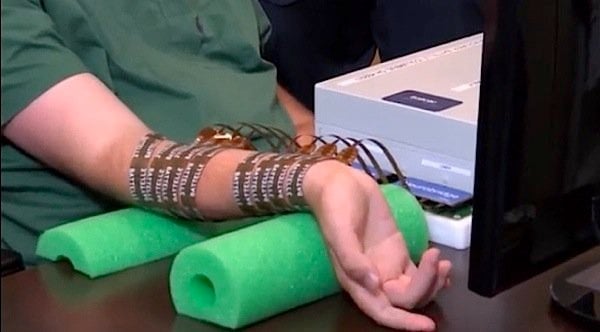For the first time ever, a quadriplegic man has moved his paralyzed hand using only his thoughts. That simple act is being hailed as a breakthrough in the search for improved movement for spinal injury patients. While other experimenters have used computers and robotics to move paralyzed muscles, this is said to be the first human-machine interface by which a person has been able to consciously move a paralyzed limb using brain waves.
The technology involved, called Neurobridge, was developed at Ohio State University and Battelle Memorial Institute. A thought-reading microchip was first implanted in the area of the patient’s brain that controls the muscles of the arm. The chip processes the patient’s thoughts, then transmits them to a specially designed electrode stimulation sleeve worn on his forearm, bypassing, or bridging, the spinal cord. The sleeve then converts the signals from the brain into movement by stimulating the appropriate muscles in the arm, and it does so in less than one-tenth of a second.

The research leader at Battelle compared the process to a heart bypass, except that instead of bypassing blood “we’re bypassing electrical signals. We’re taking those signals from the brain, going around the injury, and actually going directly to the muscles,” said Chad Bouton.
The team has worked on the Neurobridge technology for more than a decade, developing the algorithms and the sleeve to make it possible. Though still a long way off, the ultimate goal of the technology is to restore self-powered movement for brain and spinal cord injury patients.
The head of the Department of Physical Medicine and Rehabilitation at Ohio State University’s Wexner Medical Center called the development a “tremendous stride forward . . . Now we’re examining human-machine interfaces and interactions, and how that type of technology can help.”


































